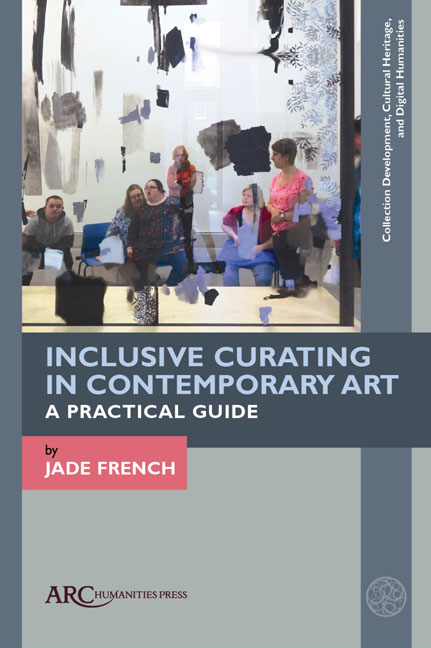Summary
“SO, WHAT IS A CURATOR ANYWAY?”
A monumental question asked so casually, and at that particular moment, I had no answer. This fleeting exchange with inclusive curator Eddie during our first curatorial meeting remains a memorable one. It cuts to the heart of a key question concerning the practice of inclusive curating: what does a curator actually do?
A century ago the role of a curator conjured an image of a singular figure in a museum's basement: tending, caring, and cataloguing collections and artefacts. Yet over recent decades curating has moved beyond any singular definition and now occupies a much broader scope of activities, practices, and professions. The modern-day curator is not only a carer and preserver of cultural heritage, they are influential selectors, inter-preters, commissioners, activists, artists, and tastemakers. The curator, once a behind-the-scenes caring figure who “tended” ground, has evolved to one who actively secures, organizes, and landscapes it; becoming the culturally central figure we know today.
But despite significant transformation, curating has an enduring reputation as an exclusive job for a privileged few. The curator's status as a powerful “expert” and “gatekeeper” persists, with art critic David Sylvester claiming that the most important people in the cultural world are not artists but in fact curators, “the true brokers of the art world.” Curators have risen to such prominence particularly within contemporary art, with some gaining almost celebrity-like status, because of their increased importance in mediating between institutions, artists, the academy, market forces, and crucially, publics.
Alongside this evolution of the curator, recent decades have also witnessed a radical re-examination of the museum's role, purpose, and responsibility in society. Traditional concepts of what a museum is and how it should operate have been met with new intellectual, social, and political concerns regarding the legitimacy of specialized knowledge, bias in collecting and display, and the museum's civic purpose. Museums have therefore become increasingly aware of reflecting in both exhibitions and collections the voices of communities in more respectful and equitable ways, moving towards more collaborative and participatory approaches to exhibition making.
- Type
- Chapter
- Information
- Inclusive Curating in Contemporary ArtA Practical Guide, pp. 1 - 22Publisher: Amsterdam University PressPrint publication year: 2020



